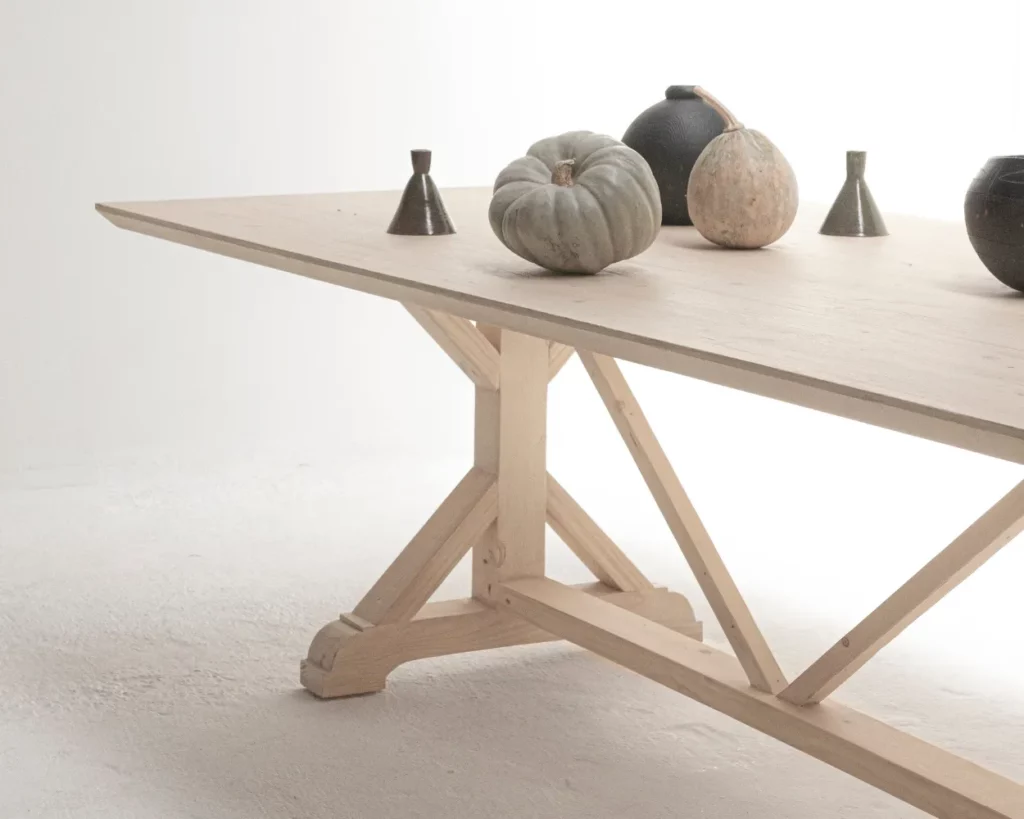A Feast for the Ages: Exploring the History of Dinner and Dining Room Furniture
Dinner, a daily ritual for many, has a rich and storied history that spans centuries. From humble beginnings to lavish banquets, the way we dine has evolved significantly over time. Alongside this evolution, dining room furniture has played a pivotal role in shaping the dining experience. In this article, join Lighouse as we embark on a journey through time to explore the history of dinner and the fascinating evolution of dining room furniture.
The Origins of Dining Room Furniture

The concept of dining dates back to ancient civilisations, where communal meals were integral to social life. In early human history, dining was a simple affair, with people sitting on the ground or basic wooden stools, feasting on whatever nature provided.
As societies advanced, so did the art of dining. The Greeks and Romans introduced the concept of reclining on couches or lounges while enjoying meals. These couches, known as klinai, became a symbol of social status, with more ornate and elaborate designs for the elite.
The Medieval Feast
Medieval Europe saw a shift in dining practices. Large feasts and banquets were common, and they played a crucial role in showcasing wealth and power. Long, rectangular wooden tables were used to accommodate the masses, and wooden benches or stools served as seating. During this period, dining room furniture began to take on more structure and form, with trestle tables becoming a popular choice. These tables were supported by a frame consisting of two or more trestles, which could be easily dismantled for storage when not in use.
The Renaissance and Elegance
The Renaissance brought about a resurgence of classical ideals, including a focus on refined dining. Dining room furniture took on a more ornate and elegant form. Elaborately carved wooden tables and chairs, often adorned with intricate motifs, became the norm among the aristocracy. The dining room itself began to emerge as a dedicated space within homes, separate from the general living area. This marked the transition from communal feasting to more private and formal dining.
The Victorian Era and Opulence
The 19th century, particularly the Victorian era, was marked by opulence and excess in dining. Elaborate dining rooms became a symbol of prestige and wealth. Furniture designers embraced intricate detailing and exotic materials. Dining tables were often expandable, accommodating large gatherings. Carved wooden chairs with upholstered seats and backs provided comfort and style. Sideboards, china cabinets, and other storage pieces became essential additions to the dining room, showcasing fine china, silverware, and glassware.
The Modern Era and Functionality
The 20th century brought significant changes to dining and dining room furniture. The influence of modernism emphasised functionality, simplicity, and efficiency. Dining tables and chairs took on cleaner lines and more streamlined designs. The focus shifted from ornamentation to functionality, reflecting the changing lifestyles and needs of the time.
Contemporary Dining and Versatility
In the 21st century, dining continues to evolve. Contemporary dining room furniture reflects a desire for versatility and adaptability. Tables with extension mechanisms allow for flexible seating arrangements, accommodating both small gatherings and larger parties. Materials like reclaimed wood, glass, and metal are popular choices, reflecting a commitment to sustainability and modern aesthetics. Dining room designs emphasise open floor plans, blurring the boundaries between dining and living spaces.
The Role of Dining Furniture Today
Today, dining furniture serves as a vital element in creating a harmonious and inviting dining experience. Tables, chairs, sideboards, and storage pieces are not just functional; they are expressions of style and taste. Modern dining room furniture prioritises comfort, durability, and design innovation.
Customisation options abound, allowing individuals to tailor their dining furniture to their unique preferences. From the choice of wood and finish to the selection of seating options, dining furniture can be personalised to suit individual lifestyles and aesthetics.
A Feast for the Ages
Dining furniture, as a central component of the dining experience, has evolved from simple stools to intricate tables and chairs, each design mirroring the values and aspirations of its time. Today, dining room furniture embodies a blend of functionality, style, and personalisation, allowing individuals to create dining spaces that cater to their unique needs and tastes.
As we continue to celebrate the art of dining, the history of dinner and dining furniture reminds us that the act of breaking bread together is not just a necessity but a timeless tradition that transcends generations, cultures, and design trends. It is a testament to the enduring significance of shared meals and the spaces we gather in to create cherished memories. For your own custom dining room furniture, get in touch with the artisans at Lighouse today.




 Pretoria
Pretoria